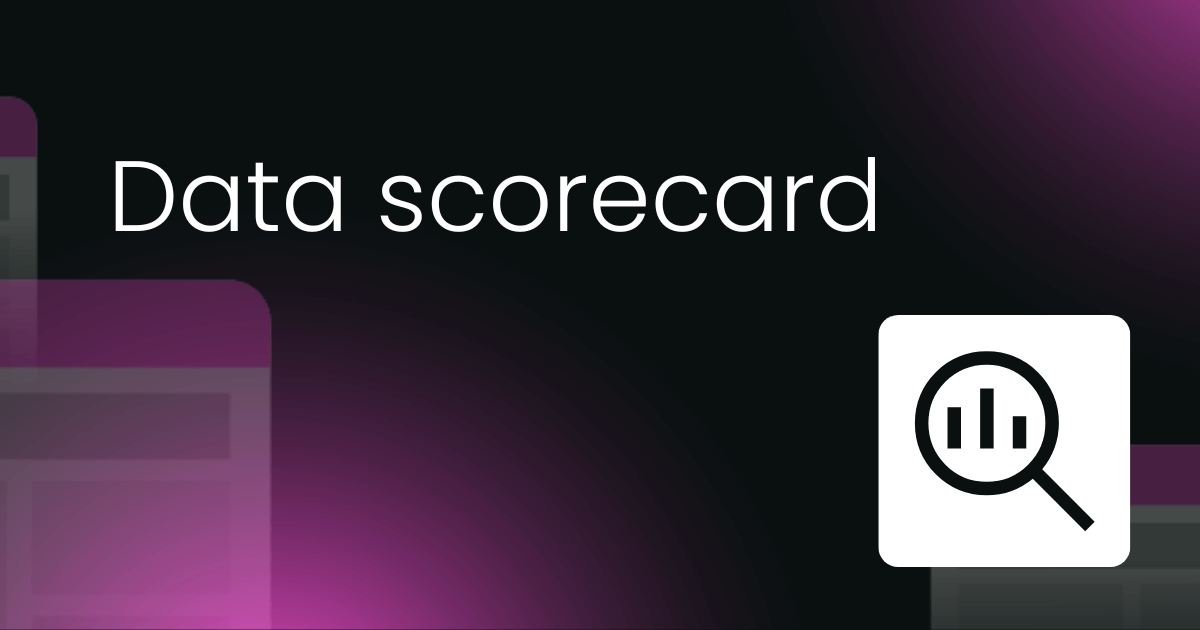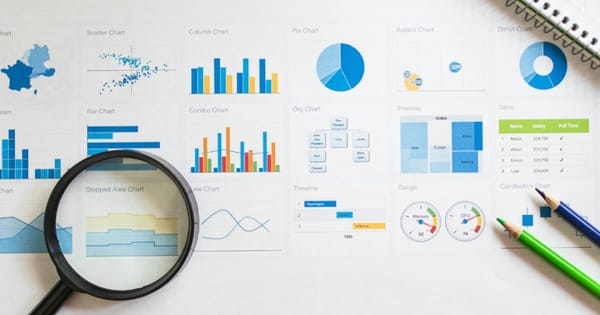Customer success teams have access to a wealth of data about their customers' usage, engagement, and satisfaction with their products or services.
While raw data provides valuable insights, visualizing and transforming this data into compelling stories and narratives can be even more impactful.
If there's one thing to be said about customer success, it's this: it's all about building strong, lasting relationships. But to do this effectively, your customer success team needs to clearly understand your customers' needs, challenges, and goals. You also need to be able to communicate insights and recommendations in a compelling way. This is where data visualization and storytelling become critical skills.
In this article, we’re going to take a look at:
- Data visualization
- Communicating key insights
- Tech platforms to help visualize data
- Storytelling
- Disseminating insights across your org
- Different storytelling mediums
Why visualize customer success data?
Well-designed visuals do more than present data – they tell a story. The human brain processes images far faster than text. We're hardwired to respond emotionally and logically to visuals. Compelling data visualization leverages this for maximum impact.
Visuals attract and hold attention. Audiences will engage more when you present information visually compared to just numbers or blocks of text. In a recent study, 64% of participants made an immediate decision following presentations that used an overview map. That kind of stat is hard to sneer at!
Useful techniques include:
- Using color to highlight or categorize data
- Incorporating graphics and illustrations
- Animated data visualization
- Interactive charts that respond to user input
Visualizations also foster understanding by making complex data easier to digest. Seeing trends in graphical form allows audiences to grasp insights intuitively. Icons, symbols, and metaphors help connect visuals to real-world concepts.
For Customer Success Managers (CSMs) and CS leaders, great visualization brings data to life. It acts as a springboard for productive conversations with stakeholders. You can walk them through key findings interactively using well-crafted charts and graphs.
Crafting visualizations that communicate key insights
With the right visualizations, customer success teams can quickly communicate key insights, trends, and patterns in the data.
For example, line charts can showcase changes over time, bar charts can compare values across different customer segments, and heat maps can surface usage patterns.
A single image can convey what might otherwise require pages of text or a lengthy presentation. Visuals are universally understood, breaking down language barriers. They can capture attention and get key messages across at a glance.
Here are a few examples of effective visualizations you can leverage in customer success:
- Churn rate dashboards to monitor customer health metrics
- Adoption scatter plots showing feature usage over time
- Relationship mapping to understand connections between accounts
- Journey mapping to analyze pain points across experiences
Best practices for effective visualizations
Now feast your eyes on some best practices for effective visualizations:
- Focusing visuals on key metrics and insights, removing unnecessary details that distract from the main point
- Designing clear and intuitive visuals that are easy for audiences to understand
- Using appropriate chart types based on the data (such as time series data for line charts)
- Formatting visuals for easy consumption, highlighting important data points and trends
- Including descriptive titles and labels so the image is understandable on its own
- Employing consistent design elements and branding for professionalism
%20(1).jpg)
Helpful tools to create impactful visualizations
Many powerful tools are available today to help create meaningful visualizations. Common options include:
- Tableau: Flexible desktop and cloud data visualization software with advanced analytics capabilities. Tableau enables interactive dashboards.
- Looker: Business intelligence platform with data modeling and tools to build interactive data apps and dashboards.
- Power BI: Microsoft's business analytics solution to connect data sources, visualize insights, and share dashboards.
- Google Data Studio: Free tool to build dashboards with easy integration with Google products. Admittedly, you have imited customization.
- Chart.js: JavaScript library to generate charts and graphs for web apps. Overall, Chart.js is lightweight and customizable.
Now, having access the right tools totally depends on your organization's specific needs and technical environment. There might be some wiggle room if one tool can be used cross-functionally with another team or department. In this instance, it might be easier to use Looker or Tableau if you know your sales team already has a seat with a plan.
But here’s the key point: communication. If you don’t have regular conversations with your colleagues, you could miss identifying potential areas where your tech stack crossovers.
But overall, with the wealth of options available today, customer success teams can find a solution to create almost any visualization or dashboard they may need.
Storytelling techniques that bring data to life
We think it’s helpful to think of visualizations and storytelling as two sides of the same coin. Visualizations provide the foundation, but effective storytelling brings the data to life.
What is storytelling?
Storytelling is the art of weaving facts and insights into compelling narratives. In customer success, you deal with troves of data, but the data itself doesn't always resonate. Stories give the data meaning and emotional connection. Narratives make it relatable.
Stories speak to our inherent human nature. We think, learn, and communicate through stories. We respond to archetypes, characters, conflicts, and resolutions. Storytelling structures information in a way our minds intuitively grasp. Rather than facing dry facts, we become actively engaged.
Collecting and collating data can often feel a little one-dimensional, somewhat lacking context, emotion, and general humanity. Storytelling blends empathy into cold, hard data. It adds life by bridging the gap between information and interpretation. A skilled storyteller selects data to build narratives that inform, inspire, or incite action.
Here are some examples of using storytelling with customer data:
- Personas with fictional biographies to represent customer segments
- Illustrating challenges through a typical user's experience
- Case studies exploring how a customer overcame obstacles
- Journey maps with narrative arcs and plot points
- “Year-in-the-life” stories highlighting annual milestones
Once you’ve got your visualized data via one of the aforementioned programs, customer success professionals can employ several techniques to craft compelling narratives using data:
- Contextualizing insights: Explain what the data means for the audience and why it matters to them. Provide necessary background and put insights in a broader context for maximum impact.
- Humanizing through examples: Use specific customer stories and examples to humanize the data. This helps audiences connect with the information on a more personal level.
- Journey-based framework: Structure the narrative with a beginning, middle, and end like a journey. Build up key insights and concepts over time for audiences to follow along.
- Annotating charts: Use callouts, annotations, and highlights on visuals themselves to draw attention to key data points, trends, and takeaways.
- Consistent branding and design: Maintain consistent fonts, color schemes, logos, and design elements. This reinforces retention and creates professional, memorable presentations.
- Limiting cognitive load: Avoid overloading audiences with excessive text, complex visuals, or too much information at once. Streamline for clarity and emphasis only on critical concepts.
- Action-oriented conclusions: End each story with clear conclusions on the path forward. Provide specific recommendations on how key stakeholders can act on insights uncovered.
Disseminating insights to diverse audiences
Now, this might sound like the overstatement of the century, but it’s a point that deserves drilling in nonetheless.
Leadership and buy-in for customer success hinge on black-and-white data reporting. It’s the fuel that showcases the important work customer success teams are building and scaling.
Remember, customer success insights are like gold dust. (Actually, they’re not even like gold dust: they’re so unique, plucked straight from the horse’s mouth, they are the SaaS equivalent to gold dust!)
Once you’ve got these insights, there’s no point sitting on them waiting for them to go cold. You need to share data insights with a variety of audiences inside your function. Again, this harks back to the importance of:
- Cross-departmental communication and collaboration, and
- Shouting about key customer success updates.
Below, you’ll find an inexhaustive list of some of the different groups of stakeholders you’ll likely report your data insights.
It’s worth bearing in mind that different presentation strategies may be required for each group:
Company leadership
Executives appreciate high-level summaries focused on strategic impact, risks, and opportunities. Limit technical details unless specifically requested. Convey both positive and negative outcomes transparently.
Product and engineering teams
These technical teams want sufficient details to take action. Focus presentations on options to improve products and experiences based on customer data and feedback. Provide concrete recommendations.
Sales and marketing groups
These outward-facing teams need customer insights to refine messaging and campaigns. Share compelling stats and trends on customer demographics, challenges, and desires for their products/services.
Customer support and services
Data on common customer issues and pain points is most valuable to these teams. Present detailed information on where customers struggle and how processes could be improved based on the evidence.
Individual customer stakeholders
In customer business reviews, focus visuals and talking points on that individual customer's data and trajectory. Customize the presentation to their situation and goals.
Different mediums to share stories with wide audiences
There are many options available to share data stories and presentations with both internal and external audiences. Customer success teams should take advantage of these mediums and collaborate, where possible, with cross-functional teams like marketing to bring these data-driven insights to life.
- Dashboards
Interactive dashboards provide ongoing visibility into key customer success metrics and trends. Dashboards can be accessed by multiple stakeholder groups through tools.
- Presentation slides
Static presentation slide analyses (PowerPoint, Google Slides) are useful when presenting insights in meetings or company gatherings. Slides provide consistency across multiple presenters.
- Email newsletters
Email newsletters and reports sent on a regular cadence (weekly/monthly) enable efficient delivery of data stories and updates to large subscriber lists.
- Blog posts and articles
For public-facing insights, customer success thought leaders can publish blog posts and articles highlighting trends, analyses, and recommendations from customer data.
- Video
To capture audiences in an engaging multimedia format, consider explanatory videos that walk through key data insights and their implications.
- Infographics
These graphics present complex data insights in a visually simpler way. Infographics are easily consumable for both internal and external audiences.
By leveraging the right mix of visualization, storytelling, and mediums, customer success teams can ensure data-driven insights are consumed by diverse audiences for maximum business impact. Audiences receive not just raw data but compelling narratives to drive strategy, actions, and better outcomes.

TL;DR: Stories give data meaning and relevance
At its core, data simply represents numbers or facts. Stories impart meaning. They highlight why particular data points matter and their wider relevance. Storytelling draws clear lines between seemingly unrelated points.
Instead of merely listing customer retention rates, tell a story about those who almost canceled last quarter. This is the real-life stuff that puts everyone’s collective efforts into perspective. As a CSM, you have the rare gift to put a name to the customer. You can share their journey from initial onboarding frustrations to renewal after adoption increased.
As a CSM, you’re in the empathy business, right? It’s up to you to forge meaningful connections – internally and externally. It’s your job to make people care, so give names and personalities to numbers to drive meaning. Use narrative techniques like foreshadowing to underscore trends.
With storytelling, customer data transforms from figures on a spreadsheet to actionable insights that drive real results. Stories stick with us long after forget sterile statistics. They inspire "aha" moments and new ways of thinking.
Final thoughts on harnessing the power of visuals and stories
CSMs who’ve whittled customer success down to a fine art have mastered both the science of data and the art of communication. But we’re not saying it’s a walk in the park. It’s something that’ll require routine and consistent practice.
But here’s a great starting off point. Combining visualization and storytelling allows you to inform and persuade stakeholders powerfully. We suggest to go the whole hog:
- Lean on visuals to distill complex concepts simply and use stories to add depth, emotion, and relatability.
- When presenting your data insights to key stakeholders, aim for balance in data presentation.
- Don't oversimplify with basic charts, but avoid overwhelming with overly complex visuals. It might seem like a creative idea at the time, but consider how it’ll land.
- Identify the essence of your message and build crystal clear visualization to express it. Once you’ve got this foundation, then craft compelling stories using selective data to provide richness, meaning, and connection.
With practice, you will learn to translate abstract customer data into tangible insights.

If you enjoyed this article on storytelling, you ought to check out our dedicated Customer Success Slack community, an online space entirely a-buzz with real-life CSMs and CS leaders conversations.



 Follow us on LinkedIn
Follow us on LinkedIn










